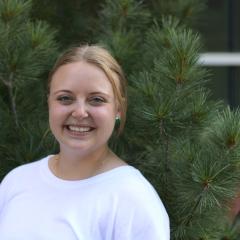

This article was first published on the TUAS website.
Let us introduce Associate Professor John Toenjes from the University of Illinois, Urbana-Champaign, USA – the fifth Fulbright specialist at TUAS. Bringing along his experience and expertise in innovative distance learning technologies to be incorporated in dance and music education, Toenjes spent three weeks in Finland as a Fulbright specialist in November 2019.
Toenjes’s first journey to Finland involved visiting the cities of Turku, Oulu and Kuopio in the context of Digital Together, a project that promotes the use of digital distance learning in the arts.
Low latency AV transmission systems change landscape
Digital Together is funded by the Finnish Ministry of Education and Culture and carried out between eight Finnish universities of applied sciences that are committed to finding ways to bring the students and teachers in their dance and music degree programmes together in a real-time digital visual and audio learning space.
A key question is how to teach dance students important concepts of musical interpretation, phrasing and rhythmical analysis and develop students’ overall intuitive musicality in a distance two-dimensional environment. Equally as important is creative experimentation in artistic uses of this important technology.
Previously, a typical problem in online dance learning that has led to negative user experiences has been the delayed exchange, i.e. latency, in the live relationship between musicians and dancers. This problem is solved by the advent of high-quality low latency software which eliminate any previous delays in signal processing.
Toenjes, a leading international innovator of creative digital resources, is particularly familiar with the low latency AV streaming system LoLa.
“LoLa is a software programme that radically reduces latency common to video streaming programmes such as Skype or Zoom,” explains Senior Lecturer at TUAS David Yoken.
“This latency, or delay, presents challenges when focusing on the real-time distant digital exchange between musicians and/or dancers where nanosecond synchronicity is key to a successful ensemble performance or a truly functioning ‘online’ live creative dance composition/choreography class that can occur between two distant universities. LoLa solves these issues.”
This is, however, not about using technology because usable technology is available. There are also wider sustainability aspects to be considered. Namely, advancing the use of digital learning technologies in a field that has traditionally leaned heavily on live presence helps reduce the carbon emissions caused by travelling long distances.
Impressed with Finnish students
During his three-week Fulbright residency in Finland, Toenjes spent one week with Turku University of Applied Sciences (TUAS) in Southwest Finland, the second week at Oulu University of Applied Sciences further up north, and the third week at Savonia University of Applied Sciences, located in Kuopio in Eastern Finland.
”I’m impressed with Finnish students,” Toenjes describes his overriding impressions after giving lectures and organizing workshops. ”They really get down to business and, because of that, I didn’t have to work that hard with them.”
”I introduced them to the idea of dancing in the LoLa system, with the related hardware and software. I helped them realize that they are dancing in a whole different medium.”
After this, says Toenjes, students started working diligently around the ideas they had just learnt and proceeded independently, not expecting the teacher to hand them ready-made answers and solutions.
Future plans and upcoming collaboration
”I’ve done some research now and will write up ideas and findings,” Toenjes explains after his 3-week stay in Finland. “Suggestions for how to continue these collaborations and ways to make the system more ideal for dancing. For instance, increasing the number of cameras will help.”
“We had a remarkable opportunity to have John Toenjes working with our TUAS Arts Academy’s dance and music students focusing on the LoLa live video/audio exchanges with the dance and music students in Oulu and Kuopio. Laboratory Engineer and network specialist Vesa Slotte from TUAS School of ICT was a great help with his support and knowledge regarding the LoLa system,” David Yoken summarizes.
“John not only has a deep background in the technical aspects of distant/online cyberspace creative learning, but he also was able to lead the dance and music student towards a true collaboration. For many of the student participants, this was perhaps the first time they had the opportunity to work in this interdisciplinary manner.”
Yoken continues: “Regarding future plans, John and I drafted a Memorandum of Understanding, i.e. a MOU, that we propose to be signed by TUAS in Turku, Finland, and the University of Illinois, Urbana-Champaign, Illinois, USA. Already we spoke about creating some pilot distant sessions – using LoLa, for example – between the dance students at the University of Illinois, Urbana-Champaign’s Dance Department and our Arts Academy’s dance students during the coming spring. We also discussed co-authoring a publishable paper, as well as other areas of future cooperation.”
Making arts meet engineering and business
In a more general sense, what kind of development would Toenjes like to witness?
”What I’m extremely interested in is how to incorporate arts into engineering and business,” he says. “Not to isolate these two fields but to integrate them.”
To use technology in the arts; to insert arts in technical fields. That sounds like an example of what we very much should be doing when talking about multidisciplinary and cross-institutional collaboration, breaking out of traditional silos and creating room for innovation.


